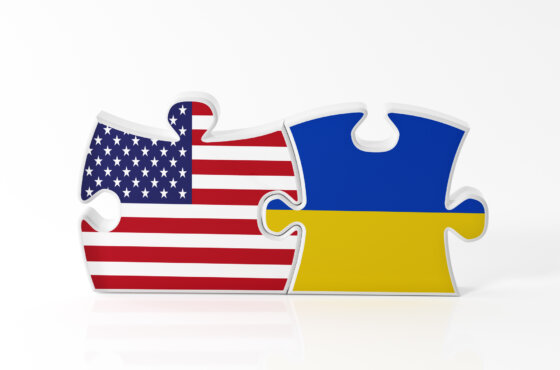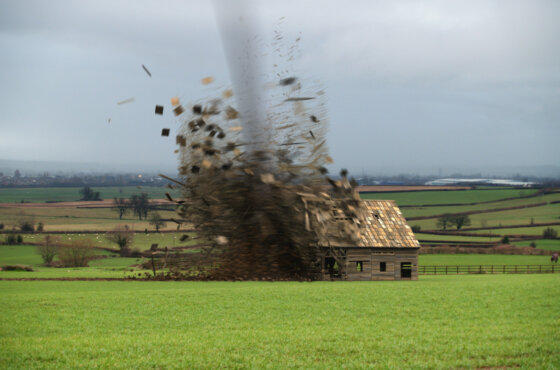US intelligence released Bin Laden materials
On Wednesday morning, US intelligence officials placed a small portion of the material seized by US special forces 2 in May 2011 in Bin Laden’s mansion in Pakistan’s Abbotbad, named after British major James Abbott, who founded it after the annexation of Punjab in 1853, on its website.
With a view to conspiracy, Osama bin Laden was not connected to the Internet and therefore received information about the world in an old-fashioned way. He read books and the press.
The al-Qaeda leader also exchanged paper letters with his loved ones rather than electronic messages. But he did not live entirely in the Stone Age and sometimes recorded his messages on video.
Shooting Bin Laden, the special forces quickly gathered up plastic DVD bags, audio and video recordings, manuscripts, letters, newspapers and magazines. Journalists Stephen Hayes and Thomas Jocelyn told Wall Street Journal in March that mining included 10 hard drives, nearly a hundred flash drives and a dozen cell phones. According to the authors, a total of trophies amounted to one and a half million pages.
Their fate and volume have long been the subject of controversy. A few days after the special forces' visit to Bin Laden, one of the leaders of the US military intelligence said that the trophies were a treasure trove of terrorist materials.
But last week in London came out article of the legendary american journalist seymour hersh about the operation against the most famous terrorist. The author quotes an unnamed former intelligence officer who said, “Despite all the talk, there were no trash bags full of computers and storage devices. The guys just stuffed some books and papers they found in the room into their backpacks.”
According to this source, on whose information the article by Hersh is more based, there were no professional intelligence officers among the special forces who would collect documents and drives.
However, Hayes and Jocelyn claim that such experts in the group of special forces were.
Al-Qaeda's new plans
According to publicists, analysts of the Pentagon managed to study only less than 10 percent of the material brought from Bin Laden’s house, when the authorities ordered them to stop working.
According to the authors, the fact is that the analysis of the trophies formed the image of Al-Qaeda, which was very much alive and planning new operations. While the official point of view of the White House, which was preparing at that moment for the 2012 elections, was that al-Qaeda was already on its last legs, and the war on terror could be considered over.
The materials of Osama Bin Laden now released by intelligence agencies will not resolve the disputes over his archives. But they shed light on the last years of the life of the al-Qaeda leader, who experienced isolation from loved ones and from the outside world, but compensated for his isolation by correspondence and reading books and articles from the American magazines Foreign Policy, Time and Newsweek. The articles were either printed or cut from magazines.
Some of the first readers of the published trophies were amazed that Bin Laden whiled away the time for studying the Time article on the stock price of the internet service provider America On Line.
Surprise spoils include instructions for using Adobe's editing software and the video game Delta Force Extreme 3, and a Gamespot guide to video games.
Without access to the network, Bin Laden had world maps and time zones.
American intelligence released a list of 39 books in English from Bin Laden’s home library.
Interest in america
The list includes history books such as Bob Woodward's Obama's Wars, Paul Kennedy's The Rise and Fall of the Great Superpowers, and The Oxford History of Modern Wars, a treatise by the ultra-liberal American linguist Nahum Chomsky, Hegemony or Survival. America in pursuit of global domination" and the philippic "Rogue State. A Guide to the World's Only Superpower by William Bloom, a former anti-communist who became disillusioned with America during the Vietnam War and became a professional whistleblower of the CIA and US foreign policy.
In 2006, the demand for Bloom’s book jumped sharply after Bin Laden recommended it to a readership and quoted it in one of his statements.
He also had another Bloom's book, The Killing of Hope. Post-war interventions by the American military and the CIA."
From the same opera “America's Strategic Mistakes” by Willard Matthias, “The American War on Terror” by Michel Chossudovsky and “The New Pearl Harbor. Troubling Questions About the Bush Administration and 11/XNUMX by David Roy Griffin.
Foreign Policy magazine writer Siobhan O'Grady was so struck by the abundance of material on French topics that she dubbed the terrorist a "full-fledged Francophile." There was so much of this material that, when publishing a list of them, American intelligence officers placed them in a separate category.
Among them is the thick work “Economic and Social Conditions in France in the 18th Century,” published in French in 1927 and in 2004 appearing in an English translation, which was studied by the leader of al-Qaeda; a report on the restructuring of the French defense industry compiled by the US Congress in 1992; history of the French nuclear arsenal (2009); Academic works on France's role in the Great Economic Crisis and on wage inequality in that country.
Notable is the form for those wishing to join al-Qaeda, which is asked to be filled out in “clear and legible handwriting.”
One of the questions reads: “What goals would you like to achieve on the path of jihad?”
Another is “Do you wish to perform a suicide mission?” The last question logically follows from it: “Who should we notify if you become a martyr?”
Conspirology
Although in his final years Osama bin Laden portrayed himself as a Muslim theologian who encouraged "jihadists" to attack and then gave religious justification for their actions, the Islamic section of his home library contained a surprising number of popular books and pamphlets on the subject. Some of them were clearly intended for neophytes.
He had, for example, a guide “What you need to know about Islam” published by the Saudi publishing house Darussalam. It contains hundreds of precepts from the Saudi brand of Islam and includes a section on women's duty to obey their husbands and the sexual benefits of polygamy.
Bin Laden’s treatise, “Islam is Your Birthright,” includes the following covenant: “Killing the innocent is one of the worst and most heinous crimes. The Prophet forbade breaking the bones of dead animals, so what about killing an innocent?”
Commentators did not miss the abundance of conspiracy theories that the al-Qaeda leader was clearly into. They included a printout of an article about a card game that supposedly predicted the events of September 11, 2001, and Eustace Mullins' book, Secrets of the Federal Reserve, depicting a worldwide conspiracy of big bankers.
The principal anti-Semite and Holocaust denier is Mullins wrote this book in 1950 on the recommendation of Ezra Pound, whom he visited in prison, where the poet who sympathized with European fascism was imprisoned for treason.
Subscribe to ForumDaily on Google News










